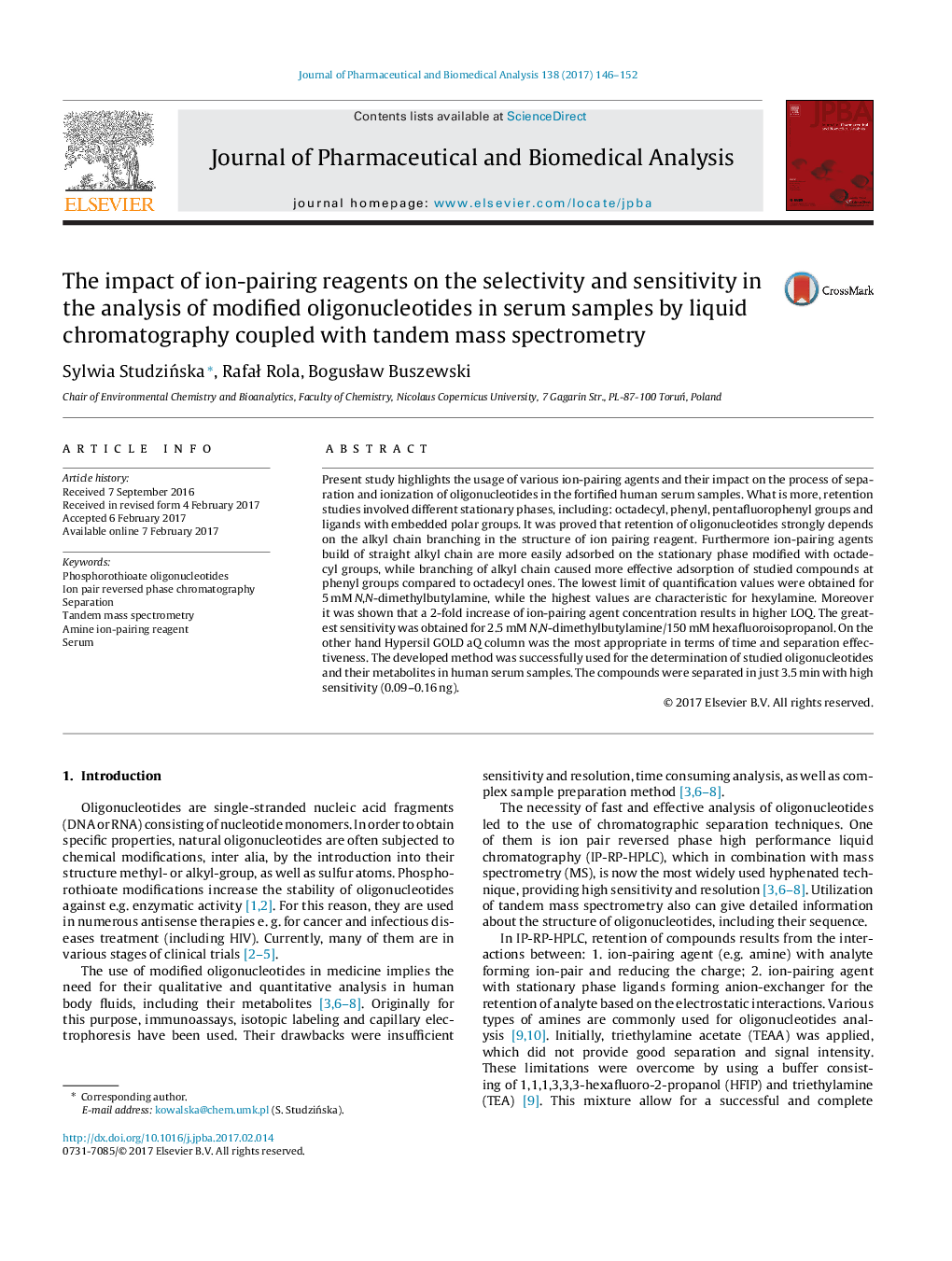| Article ID | Journal | Published Year | Pages | File Type |
|---|---|---|---|---|
| 5138180 | Journal of Pharmaceutical and Biomedical Analysis | 2017 | 7 Pages |
Abstract
Present study highlights the usage of various ion-pairing agents and their impact on the process of separation and ionization of oligonucleotides in the fortified human serum samples. What is more, retention studies involved different stationary phases, including: octadecyl, phenyl, pentafluorophenyl groups and ligands with embedded polar groups. It was proved that retention of oligonucleotides strongly depends on the alkyl chain branching in the structure of ion pairing reagent. Furthermore ion-pairing agents build of straight alkyl chain are more easily adsorbed on the stationary phase modified with octadecyl groups, while branching of alkyl chain caused more effective adsorption of studied compounds at phenyl groups compared to octadecyl ones. The lowest limit of quantification values were obtained for 5Â mMÂ N,N-dimethylbutylamine, while the highest values are characteristic for hexylamine. Moreover it was shown that a 2-fold increase of ion-pairing agent concentration results in higher LOQ. The greatest sensitivity was obtained for 2.5Â mMÂ N,N-dimethylbutylamine/150Â mM hexafluoroisopropanol. On the other hand Hypersil GOLD aQ column was the most appropriate in terms of time and separation effectiveness. The developed method was successfully used for the determination of studied oligonucleotides and their metabolites in human serum samples. The compounds were separated in just 3.5Â min with high sensitivity (0.09-0.16Â ng).
Related Topics
Physical Sciences and Engineering
Chemistry
Analytical Chemistry
Authors
Sylwia StudziÅska, RafaÅ Rola, BogusÅaw Buszewski,
